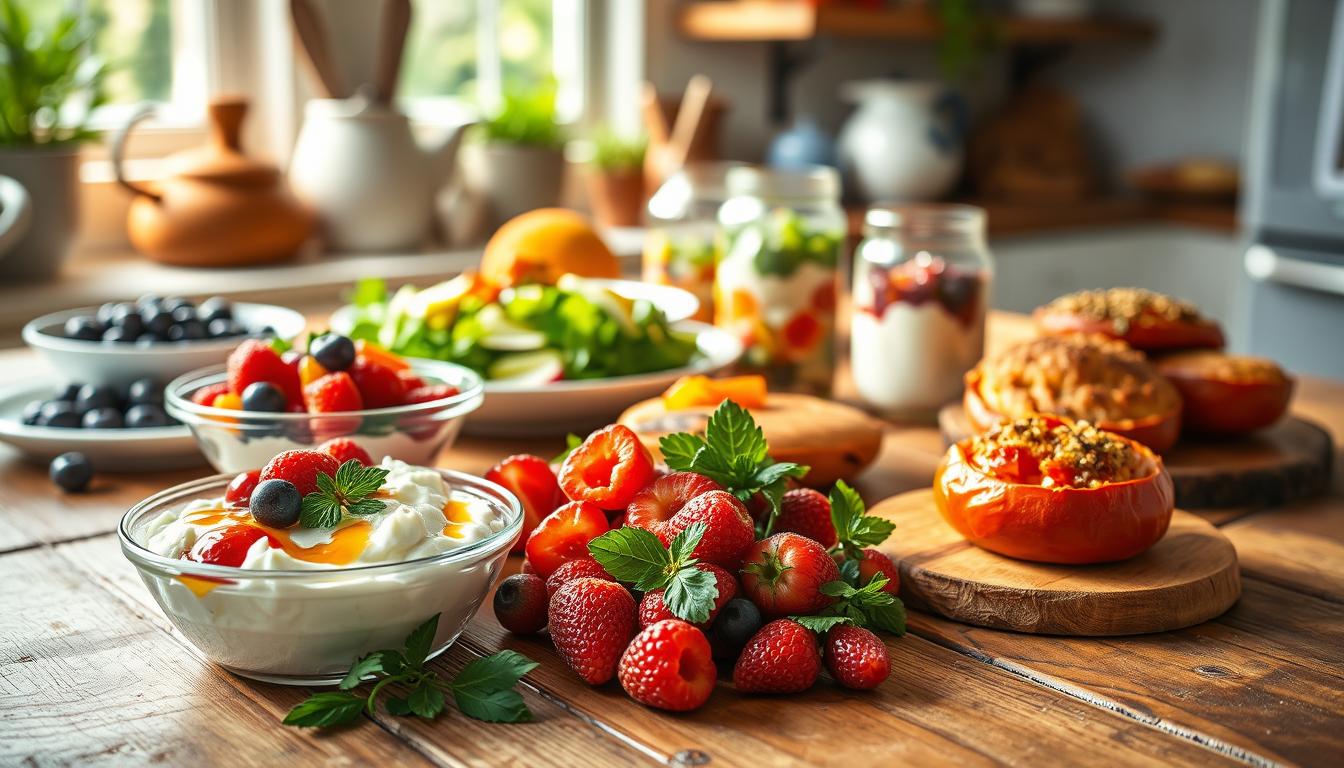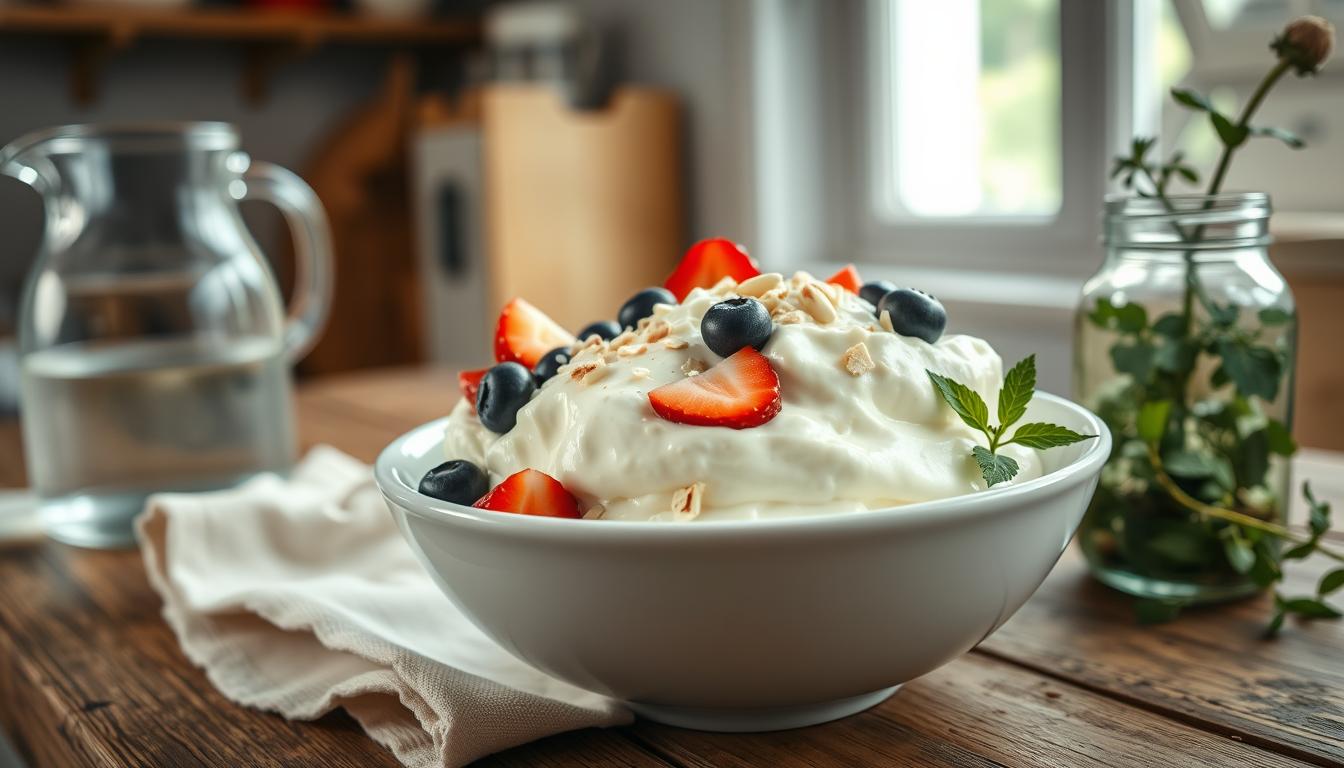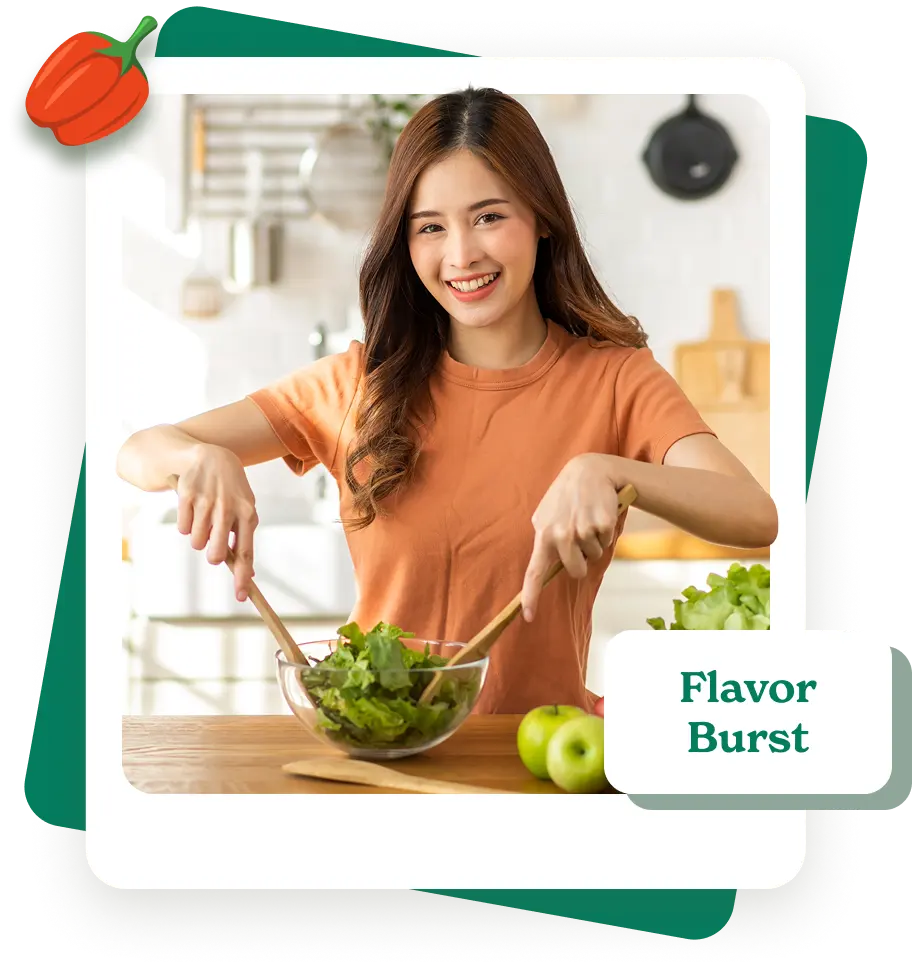Dive into the vibrant world of authentic Jamaican cuisine. Here, bold flavors and rich traditions come together for unforgettable lunches. Your taste buds are in for a treat with seven incredible Jamaican lunch recipes.
Jamaican lunch recipes are more than meals. They celebrate cultural diversity. Influenced by African, European, and Asian traditions, these dishes turn simple ingredients into extraordinary meals.
From fiery jerk chicken to savory oxtail stew, each recipe has a story. Whether you’re a seasoned cook or a curious food lover, these recipes will take you to the heart of Caribbean cooking.
Table of Contents
Exploring the Rich Heritage of Jamaican Cuisine
Jamaican cuisine is a vibrant mix of flavors from different cultures. It combines the Taino, African, European, and Asian traditions. This journey through traditional Jamaican food shows how history has shaped the island’s food.
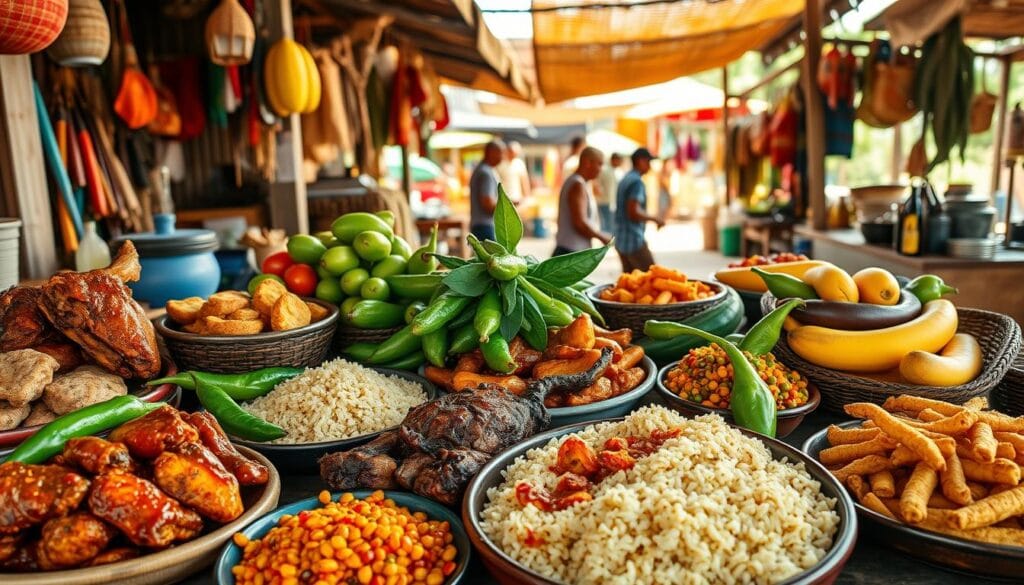
The history of Jamaican cooking is deep and rich. Each culture has left its mark on the island’s food. From the Taino’s cassava and peppers to African spices, every dish tells a piece of Jamaica’s story.
Cultural Influences on Jamaican Cooking
Jamaican cooking tips show how diverse cultures have shaped the cuisine. The island’s food reflects a blend of influences:
- Taino indigenous crops like maize and peppers
- African spices and cooking techniques
- British preservation methods
- Indian curry influences
- Chinese rice and cooking styles
Essential Jamaican Spices and Ingredients
The heart of Jamaican food is its spice palette. Key ingredients include:
- Scotch bonnet peppers – bringing intense heat
- Allspice – a quintessential Jamaican spice
- Fresh thyme
- Coconut milk
- Pimento wood
“In Jamaican cooking, every spice tells a story of migration, survival, and celebration.” – Jamaican Culinary Historian
Traditional Cooking Methods
Jamaican cooking tips highlight unique preparation techniques. These methods turn simple ingredients into amazing meals. Barrel barbecues and slow-cooking with pimento wood add depth and flavor to dishes.
Must-Have Kitchen Tools for Jamaican Lunch Recipes
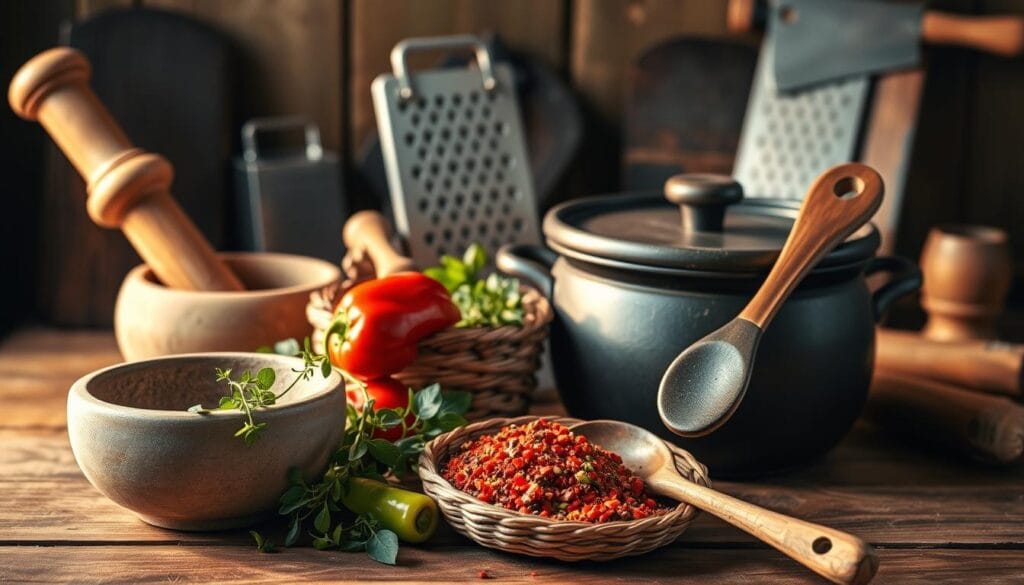
Making authentic Jamaican meals is more than just recipes. The right tools can change your cooking and make flavors pop.
For Jamaican cooking, you’ll need some key tools. These utensils help you get the taste and method right, making Jamaican food special.
- Mortar and Pestle: Essential for grinding spices and making seasonings
- Heavy-bottomed pot for slow-cooking stews and curries
- Charcoal or gas grill for classic jerk dishes
- Wooden cutting board for chopping fresh ingredients
- High-quality chef’s knife for precise chopping
Your kitchen should have tools for traditional cooking. A cast-iron skillet, for example, gives a great sear and keeps flavors true.
“The right tools are like musical instruments – they help you create culinary symphonies.” – Jamaican Chef Wisdom
| Tool | Purpose | Importance Level |
|---|---|---|
| Mortar and Pestle | Spice Grinding | High |
| Heavy-Bottomed Pot | Slow Cooking | High |
| Grill | Jerk Preparation | Medium-High |
| Cast-Iron Skillet | Searing Meats | Medium |
Getting these tools will make your Jamaican lunches delicious. Great cooking is about passion, skill, and the right tools to make your vision real.
Essential Ingredients for Authentic Jamaican Cooking
Exploring traditional Jamaican food opens up a world of flavors. It’s all about the key ingredients that make Jamaican dishes stand out.
The heart of Jamaican cuisine is its amazing ingredients. Each one tells a story of culture and tradition.
Fresh Herbs and Spices
Jamaican cooking is all about a special mix of herbs and spices. They give dishes their unique taste:
- Scotch bonnet peppers: These peppers add a fiery kick, with heat levels from 100,000 to 350,000 Scoville units
- Allspice (pimento): Essential in jerk seasoning
- Jamaican thyme: Makes savory dishes even better
- Fresh ginger: Often mixed with garlic and thyme
- Escallion (green onions): Adds a special flavor
Staple Pantry Items
Make sure your kitchen has these must-haves for Jamaican cooking:
- Coconut milk
- Canned ackee
- Curry powder
- Saltfish
Local Produce Selection
Fresh local produce makes Jamaican cooking even better:
- Callaloo: A leafy green packed with nutrients
- Breadfruit: Delicious and versatile
- Plantains: Great for many cooking methods
- Yams and sweet potatoes
Learning about these ingredients will let you explore authentic Jamaican cuisine in your kitchen.
Popular Jamaican Lunch Recipes
Explore the vibrant world of Jamaican lunch recipes. They turn your midday meals into a fun culinary journey. These easy Jamaican recipes bring out the rich flavors and cultural mix of Caribbean food, pleasing every taste.
Jamaican lunch recipes are famous for their bold spices and unique mixes. Here are some dishes you must try to experience true Jamaican cooking:
- Jerk Chicken: A spicy classic with Scotch bonnet peppers and traditional marinades
- Curry Goat: A tender, slow-cooked dish with deep, complex flavors
- Ackee and Saltfish: Jamaica’s national dish, combining unique local ingredients
- Escovitch Fish: Crispy fried fish topped with pickled vegetables
Each dish tells a story of cultural fusion. They show the mix of influences from Indigenous Tainos, Spaniards, British, Africans, and East Indians. This mix creates a diverse culinary landscape, just like Jamaica itself.
Get ready to excite your taste buds with these authentic recipes. They bring Jamaica’s spirit to your kitchen. Whether you’re an experienced cook or just starting, these lunch recipes will take you to the heart of Caribbean cuisine.
Tips for Perfecting Your Jerk Seasoning
Discover the secrets of Jamaican cooking with jerk seasoning. It’s more than a marinade; it’s a tradition that adds explosive flavors to your dishes.
Traditional Jerk Spice Blend
To make perfect jerk seasoning, know its core ingredients. The blend includes:
- Scotch bonnet peppers (3-6 peppers for customizable heat)
- Allspice berries
- Fresh thyme
- Garlic
- Brown sugar
- Ginger
- Ground cinnamon
Marinating Techniques
Marination is key for authentic Jamaican flavor. Pro tip: Different meats need different marinating times:
- Chicken breasts: 1-3 hours
- Chicken thighs: 3-24 hours
- Overnight marination gives the most intense flavor
Grilling Methods
Grilling is essential for authentic jerk cooking. Use medium heat to keep moisture in and add smoky flavor. Aim for a cooking temperature of 350-375°F. This helps prevent drying out your meat and creates a delicious crust.
Jerk seasoning is versatile. You can use it on chicken, pork, beef, shrimp, or tofu. The secret is balancing heat and flavor by adjusting the scotch bonnet peppers and their preparation.
Side Dishes That Complement Your Jamaican Lunch
No caribbean lunch ideas are complete without the perfect side dishes. Traditional jamaican food celebrates a variety of delectable accompaniments. These sides elevate your main course to an extraordinary culinary experience.
Jamaican side dishes bring vibrant flavors and textures. They transform an ordinary meal into a memorable feast. These accompaniments are not just additions but essential components that balance and enhance your lunch.
- Rice and Peas: A classic side combining red kidney beans, rice, and coconut milk
- Festival: Sweet fried dumplings that provide a delightful contrast
- Fried Plantains: Golden-brown slices offering sweet and savory notes
- Callaloo: Nutritious leafy green prepared with aromatic spices
These sides not only complement your main dish but also represent the rich culinary heritage of Jamaica. Each preparation tells a story of cultural fusion and gastronomic creativity.
| Side Dish | Key Ingredients | Flavor Profile |
|---|---|---|
| Rice and Peas | Kidney beans, coconut milk, thyme | Creamy, herbaceous |
| Fried Plantains | Ripe plantains, oil | Sweet, caramelized |
| Festival | Flour, cornmeal, sugar | Crispy, slightly sweet |
| Callaloo | Leafy greens, onions, peppers | Earthy, spicy |
By incorporating these sides, you’ll transform your lunch into an authentic jamaican culinary journey. It delights both the palate and the soul.
Jamaican Cooking Tips for Beginners
Exploring Jamaican cuisine is a thrilling journey. Whether you’re new to cooking or want to try new recipes, learning Jamaican cooking tips is key. It takes practice, patience, and understanding of important cooking techniques to make delicious meals.
Starting your Jamaican cooking adventure means learning some basic principles. These will improve your kitchen skills. Let’s look at essential techniques to enhance your cooking.
Common Mistakes to Avoid
- Don’t overcook meats, which can make them tough and dry
- Use scotch bonnet peppers sparingly to control heat levels
- Allow sufficient time for marinades to develop complex flavors
- Avoid substituting fresh ingredients with processed alternatives
Time-Saving Techniques
Using efficient cooking methods makes preparing Jamaican recipes easier:
- Prep ingredients in advance
- Use pre-mixed Jamaican spice blends
- Batch cook and freeze portions
- Invest in quality kitchen tools
Storage and Meal Prep
Smart storage keeps your Jamaican dishes tasting authentic:
| Food Item | Refrigeration Time | Freezing Time |
|---|---|---|
| Jerk Chicken | 3-4 days | 2-3 months |
| Rice and Peas | 4-5 days | 1-2 months |
| Ackee and Saltfish | 2-3 days | 1 month |
By following these tips, you’ll become more confident in cooking authentic Jamaican dishes. You’ll make meals that truly capture the essence of Jamaican cuisine.
Healthy Adaptations of Traditional Jamaican Dishes
Enjoying Jamaican dishes doesn’t have to mean giving up on health. You can make traditional recipes healthier with smart swaps and cooking methods.
It’s easy to cut down on fat and calories in Jamaican food. Just make a few tweaks to your favorite dishes:
- Choose lean proteins like chicken breast or tofu instead of fatty meats
- Switch to coconut milk with less fat
- Prefer baking or grilling over deep-frying
- Add more veggies to your meals
Rasta Pasta can be a healthy choice if done right. The original has about 304 calories per serving, with 38g carbs and 14g fat. Use whole wheat pasta and add more veggies for a better meal.
For jerk chicken, pick skinless chicken breasts and use less oil in the marinade. Traditional jerk recipes are often high in sodium. So, use low-sodium seasonings to keep the taste authentic.
With these easy changes, your Jamaican lunches can be tasty and healthy. Try out different cooking methods to make dishes that are good for you.
Pairing Drinks with Your Jamaican Lunch
Make your Caribbean lunch even better with drinks from Jamaica. These drinks add exciting flavors to your meal. They’re a great match for the island’s delicious food.
Try these drinks to turn your lunch into a Jamaican feast:
- Non-Alcoholic Refreshments
- Sorrel (Hibiscus) Drink
- Fresh Coconut Water
- Ginger Beer
- Alcoholic Beverages
- Rum Punch
- Red Stripe Beer
- Wray & Nephew Rum Cocktails
Choosing the right drink can make your meal even better. Pick one that goes well with your Jamaican dish’s spices and flavors.
| Dish | Recommended Drink |
|---|---|
| Jerk Chicken | Red Stripe Beer |
| Ackee and Saltfish | Sorrel Drink |
| Curried Goat | Rum Punch |
Pro tip: For a real Jamaican lunch, try different drinks to find your favorite!
Exploring Regional Variations in Jamaican Cuisine
Jamaica’s landscape tells a delicious story of authentic Jamaican cuisine through its diverse regional cooking styles. From coastal regions to inland territories, traditional Jamaican food reflects the island’s rich cultural tapestry and geographic diversity.
Coastal areas showcase a vibrant seafood-focused culinary tradition. Fishermen’s communities prepare dishes highlighting fresh caught marine treasures, incorporating local spices and cooking techniques passed down through generations. Typical coastal recipes include:
- Mackerel rundown with coconut milk
- Steamed fish with bammy
- Seafood pepper pot
Inland regions present a different culinary landscape. These areas emphasize hearty meat and vegetable-based recipes that reflect agricultural traditions. Farmers and rural communities develop unique dishes using locally grown produce and livestock.
“Every region in Jamaica tells a different culinary story through its ingredients and cooking methods.” – Jamaican Food Historian
The cultural influences from African, Spanish, British, and Indigenous populations have shaped these regional variations. Each area develops distinctive flavor profiles and cooking techniques that make authentic Jamaican cuisine a complex and exciting culinary experience.
Understanding these regional differences allows you to appreciate the depth and complexity of Jamaican gastronomy. From the seafood-rich coastal plates to the robust inland recipes, Jamaica offers a delicious journey through its diverse culinary landscape.
Conclusion: Embracing the Joy of Jamaican Cooking
Your journey through Jamaican cuisine is more than just learning recipes. It’s about diving into a vibrant culinary tradition. Homemade Jamaican meals are not just food; they are culture, history, and connection. Each dish shares a story of resilience, creativity, and passion, turning simple ingredients into extraordinary dishes.
As you explore these recipes, remember that cooking is an art form. It’s deeply rooted in community and sharing. The techniques you’ve learned, from perfecting jerk seasoning to understanding traditional cooking methods, open the door to creating authentic Caribbean meals. Your kitchen becomes a bridge between cultures, allowing you to celebrate Jamaica’s rich gastronomic heritage with every bite.
Embrace the adventure of Jamaican cooking by experimenting, adapting, and enjoying the process. Whether you’re preparing a quick lunch or hosting a weekend gathering, these recipes will take you to Jamaica’s sunny shores. Let your passion for cooking guide you, and don’t be afraid to add your personal touch to these time-honored recipes.
Your culinary exploration doesn’t end here—it’s just the beginning of a delicious journey. It promises to tantalize your taste buds and expand your cooking skills. Keep exploring, keep cooking, and keep celebrating the incredible flavors of Jamaican cuisine.
